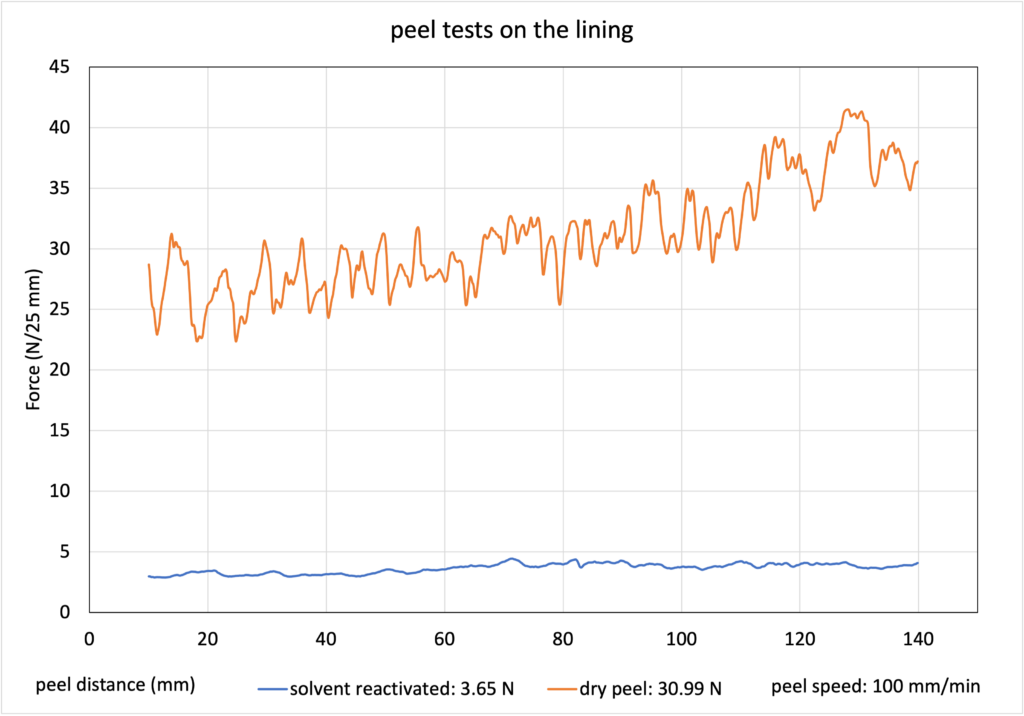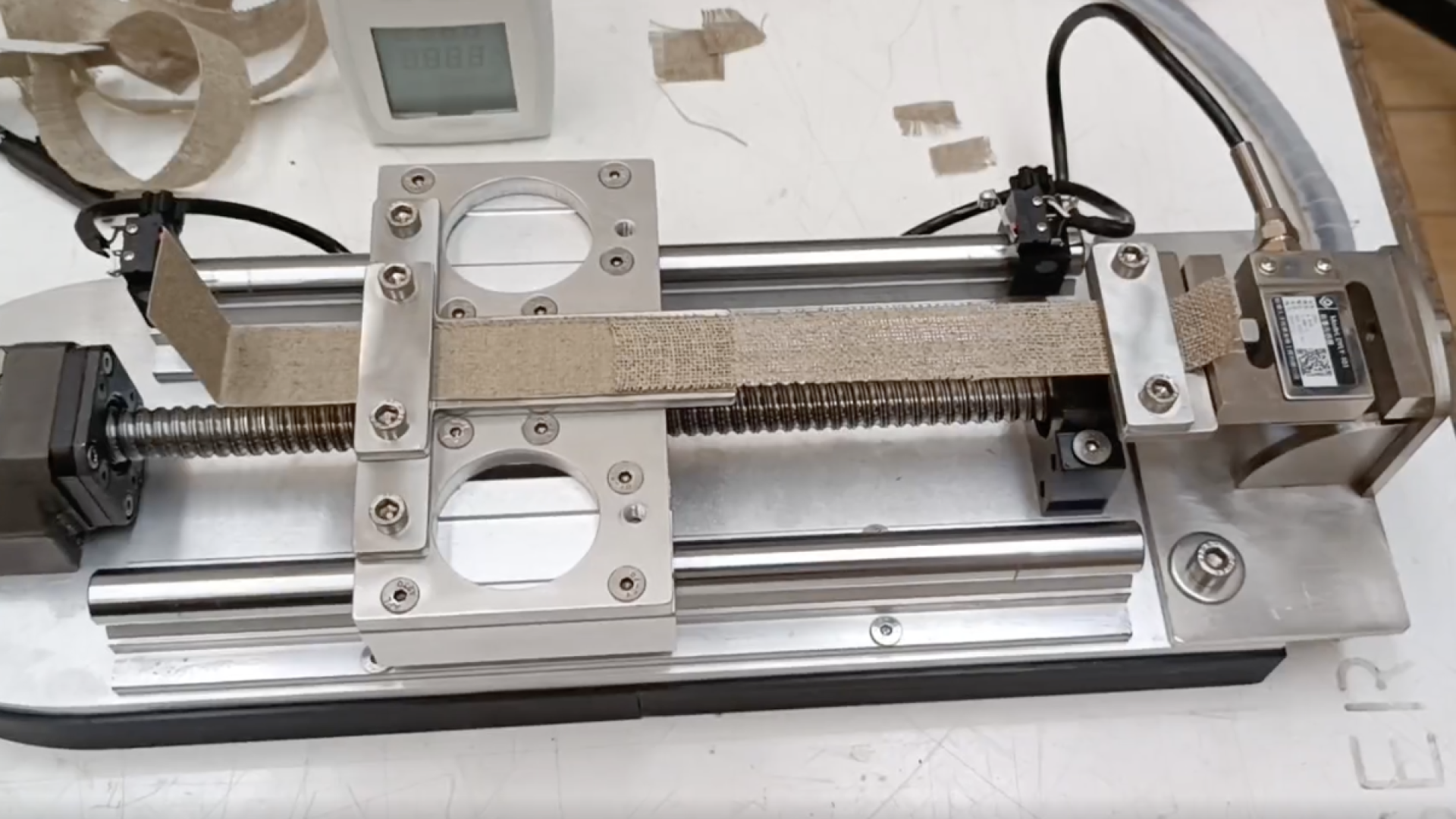The treatment of the painting by Titian, “David and Goliath” triggered the research on lining methods in 2011. Research started from a modified “mist lining”, adapted to withstand the high temperatures of Italian summers and to favor reproducibility.
The lining system is being progressively modified, changing the adhesives and their application methods, the treatment of the lining canvas, the solvents used for reactivation and the method used to apply pressure. The adhesive performance obtained with the different combinations of variables are being measured with peel tests in order to obtain a certain level of predictability.
A dedicated portable testing machine has been designed and built for the purpose. The most advanced project on the subject was completed on a large painting by Tiepolo at the Louvre Museum Paris in 2023, for which all the layers were mechanically characterized and also the adhesive joint obtained with the lining procedure.
The methods described here have been used by Equilibrarte to line oversize canvas paintings since 2011. In some special cases, as the lining of the ceiling canvas painting by Tiziano in Venice and of the detached fresco by Tiepolo at the Louvre Museum, high modulus textiles have been used in order to obtain optimal transfer of the stresses to the stiffest layer.
However, in most cases it is not possible to use a very expensive textile or one that is aesthetically very different from the original canvas. For this reason, the most commonly used textile is the linen canvas, traditionally called “pattina” in Italy, with an open weave structure and good tensile response.
The case was for very large paintings like “The martyrdom of St. Lawrence” by Mattia Preti (24.3 sqm) in Birgu, Malta, and “S. Tecla saves the town of Este from the pestilence” by Giovan Battista Tiepolo (26,4 sqm) in Este, Italy. In these cases, the textile was prepared with a layer of Plextol B500, 50% in water, applied by roll (resulting in a resin deposition of approx. 20 g/sqm. Thereafter, the resin was applied by spray, thickened with 0,1% of Rohagit, until a layer of dry resin with a weight of 120 g/sqm was obtained.
In the case of the “Circoncisione di Gesù” by Alessandro Capalti (19,2 sqm) in Rome the textile was also prepared with the same layer of Plextol B500, 50% in water, but also the remaining resin was applied by roll, until a layer of dry resin with a weight of 100 g/sqm was obtained.
The reactivation of the adhesive was done in a vacuum envelope, 0.65 bar, using 180 g/sqm of MEK vapors, during 45 minutes, followed by 45 minutes of force ventilation to extract the solvent from the vacuum envelope. This is obtained by creating air inlets using taps equipped with vacuum meters and allowing fresh air enter until the pressure is reduced to 0,3 bar.

Similar conditions were used for the lining of the Tiepolo (100 g/sqm Plextol B500 by spray and 120 g/sqm of MEK vapors). In this case, a mockup reproducing the supporting structure of the painting (identical backing materials), was created and lined at the same time as the painting in a peripherical area of the lining canvas. This allowed measuring the adhesive joint obtained for the painting, as the materials bonded were the same. Using peel tests, the force was deemed to be good for conservation. Peel tests after 30 seconds reactivation with acetone vapors showed that the adhesion was reversed, to the point that delamination happened almost spontaneously, granting effortless reversibility.

